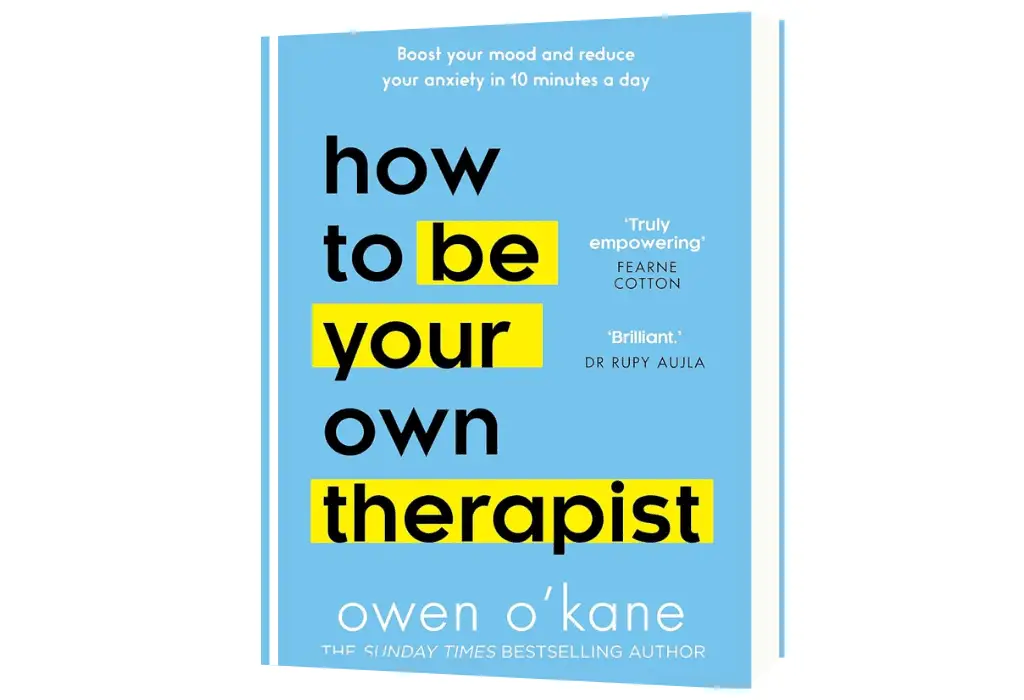Summary of “How to Be Your Own Therapist” by Owen O’Kane:
Introduction
In “How to Be Your Own Therapist,” Owen O’Kane, a renowned therapist and Sunday Times bestselling author, presents a comprehensive guide aimed at empowering individuals to take charge of their mental health. The book promises to provide tools and techniques that can be practiced in just 10 minutes a day to boost mood and reduce anxiety. O’Kane leverages his professional expertise to offer practical, actionable advice, making therapy accessible to everyone.
The Need for Self-Therapy
O’Kane begins by discussing the importance of self-therapy in today’s fast-paced world. With the increasing prevalence of mental health issues and the often limited access to professional therapy, it becomes crucial for individuals to have the skills to manage their mental health. Self-therapy is not about replacing professional help but about equipping oneself with techniques to handle everyday stressors and emotional challenges.
Understanding the Mind
A significant portion of the book is dedicated to understanding how the mind works. O’Kane explains the basics of cognitive-behavioral therapy (CBT) and other psychological frameworks that underpin the techniques he discusses. By understanding the connection between thoughts, emotions, and behaviors, readers can better grasp why they feel the way they do and how to change negative patterns.
Techniques for Boosting Mood
One of the primary goals of the book is to help readers boost their mood. O’Kane introduces various techniques that are easy to implement:
1. Mindfulness and Meditation: Simple mindfulness exercises can help ground individuals in the present moment, reducing feelings of anxiety and stress. Meditation practices, even if done for just a few minutes each day, can significantly improve mood and overall well-being.
2. Gratitude Practices: Keeping a gratitude journal or simply reflecting on positive aspects of life can shift focus from negative to positive, fostering a more optimistic outlook.
3. Physical Activity: Regular exercise is highlighted as a crucial component of mental health. O’Kane discusses the benefits of physical activity on mood and provides tips for integrating movement into daily routines.
Reducing Anxiety
Anxiety is a common issue that many people face, and O’Kane provides specific strategies to address it:
1. Breathing Exercises: Techniques such as deep breathing and progressive muscle relaxation can help calm the nervous system and reduce anxiety.
2. Grounding Techniques: These methods help individuals stay connected to the present moment and can be particularly useful during panic attacks or periods of high anxiety.
3. Cognitive Restructuring: O’Kane explains how to identify and challenge negative thought patterns, replacing them with more balanced and realistic thoughts. This cognitive restructuring can reduce anxiety by altering the way one perceives and reacts to stressful situations.
Empowerment Through Self-Awareness
Self-awareness is a recurring theme in the book. O’Kane emphasizes that understanding oneself is key to effective self-therapy. He encourages readers to reflect on their thoughts, emotions, and behaviors regularly. This self-reflection can help individuals identify patterns and triggers, making it easier to implement changes.
Practical Application
One of the strengths of “How to Be Your Own Therapist” is its focus on practical application. O’Kane ensures that the techniques he discusses are simple and can be incorporated into daily life without overwhelming the reader. Each chapter includes exercises and tips that readers can practice immediately. These small, consistent actions can lead to significant improvements over time.
Building Resilience
O’Kane also addresses the concept of resilience – the ability to bounce back from adversity. He provides strategies for building resilience, such as:
1. Positive Relationships: Building and maintaining supportive relationships can provide a buffer against stress and enhance emotional well-being.
2. Self-Compassion: Treating oneself with kindness and understanding, especially during difficult times, is crucial for resilience. O’Kane discusses the importance of self-compassion and offers exercises to cultivate it.
3. Purpose and Meaning: Engaging in activities that provide a sense of purpose and meaning can enhance resilience. O’Kane encourages readers to explore their passions and values to find what truly matters to them.
Encouragement and Support
Throughout the book, O’Kane’s tone is supportive and encouraging. He acknowledges the challenges of mental health and reassures readers that it is okay to seek help when needed. While the book provides tools for self-therapy, it also emphasizes the importance of professional support and the benefits of seeking therapy when necessary.
Case Studies and Real-Life Examples
To illustrate the effectiveness of the techniques discussed, O’Kane includes case studies and real-life examples. These stories provide practical insights into how others have successfully implemented self-therapy techniques and offer inspiration to readers.
Conclusion
In conclusion, “How to Be Your Own Therapist” is a valuable resource for anyone looking to improve their mental health and well-being. Owen O’Kane provides a comprehensive guide that is both practical and accessible. By dedicating just 10 minutes a day to the techniques discussed, readers can experience significant improvements in their mood and a reduction in anxiety.
O’Kane’s approach is grounded in his professional expertise, yet presented in a way that is easy to understand and apply. The book empowers individuals to take control of their mental health, fostering greater self-awareness, resilience, and overall well-being. Whether used as a supplement to professional therapy or as a standalone guide, “How to Be Your Own Therapist” offers valuable tools for anyone seeking to enhance their mental health.







